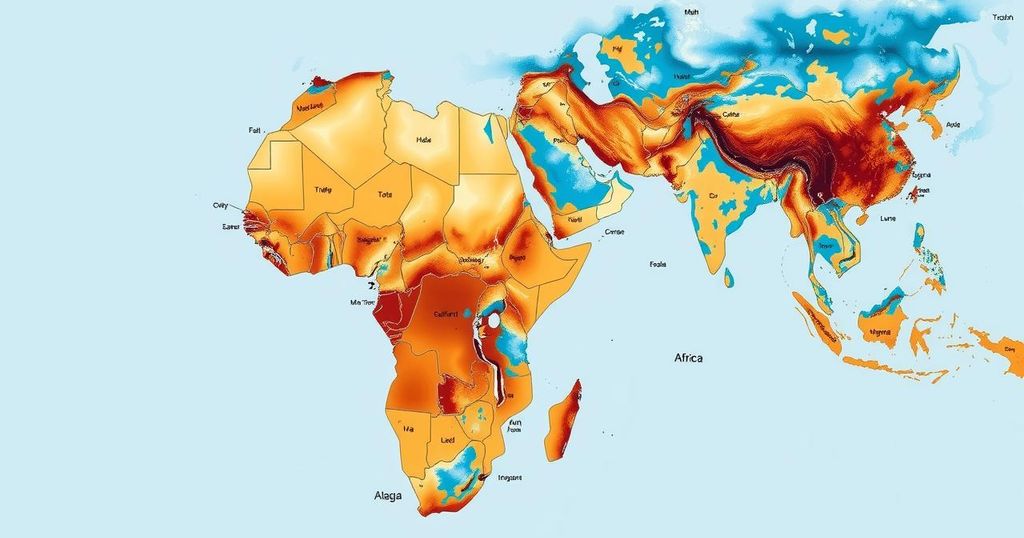Global Weather Hazards Summary for July 2025
- ENSO-neutral conditions characterize global weather this week.
- Abnormal dryness affects central Africa, eastern Asia, and Yemen.
- Eastern Nigeria and Cameroon experience significant dryness and water shortages.
- Flooding persists in urban Kinshasa and the Sudd wetlands of South Sudan.
- Western Guinea-Conakry could see high flooding risks next week.
Dry and Flooding Conditions Across Africa
Overview of Global Weather Patterns and Hazards 2025 In the latest global weather report covering July 3 to July 9, 2025, ENSO-neutral conditions continue to define the atmospheric landscape. Regions such as central Africa, eastern Central Asia, western Yemen, and northern Hispaniola are grappling with abnormal dryness, raising concerns about agricultural impacts and water resource management. Additionally, various areas across the African continent are experiencing a mix of dry conditions and flooding, highlighting the complexity of current weather patterns.
Areas Facing Extreme Dryness or Flooding
Specific Regions Affected by Weather Hazards Particularly in Africa, the weather conditions are sharply divided. In eastern Nigeria, western and northern Cameroon, and southern Chad, ongoing dryness is particularly troubling, affecting local farming and water availability. On the flip side, northern South Sudan’s Sudd wetlands continue to face inundation, while areas like southwest Nigeria are reporting significant flooding, catalyzed by heavy rainfall. Moreover, recent flooding in Kinshasa, Democratic Republic of the Congo (DRC), has drawn attention due to its substantial impact on urban infrastructure, while the overflow from the Omo Gibe River is causing crisis in districts near Lake Turkana in Ethiopia.
Predictions and Risks for Regions Across the Continent
Projections for the Coming Week As forecasts progress, regions such as western Guinea-Conakry and northwestern Ethiopia should prepare for elevated flooding risks in the week ahead. Meanwhile, West Africa displays stark contrasts, with Sierra Leone, Liberia, eastern Guinea-Conakry, and southern Mali struggling with dryness, juxtaposed against the moisture issues affecting South Sudan, southern Sudan, northeastern DRC, and northwestern Uganda. Furthermore, parts of northwestern and east-central Ethiopia are also experiencing dryness attributed to below-average rainfall since early June. On another note, as we look toward southwestern South Africa, there is an increased risk of flooding ahead, supported by both observed and forecasted moderate rainfall next week.
The latest weather analysis has revealed a complex picture across Africa, with various regions facing a stark contrast between severe dryness and troubling flooding conditions. Key areas such as eastern Nigeria, southern Chad, and several parts of Ethiopia are struggling with drier-than-normal conditions, while significant flooding events impact areas like Kinshasa and the Sudd wetlands. Moving forward, the potential for flooding in western Guinea-Conakry and the risk of dryness in South Sudan continue to underline the challenges that local populations must navigate as the weather remains unpredictable in the coming days.




Post Comment